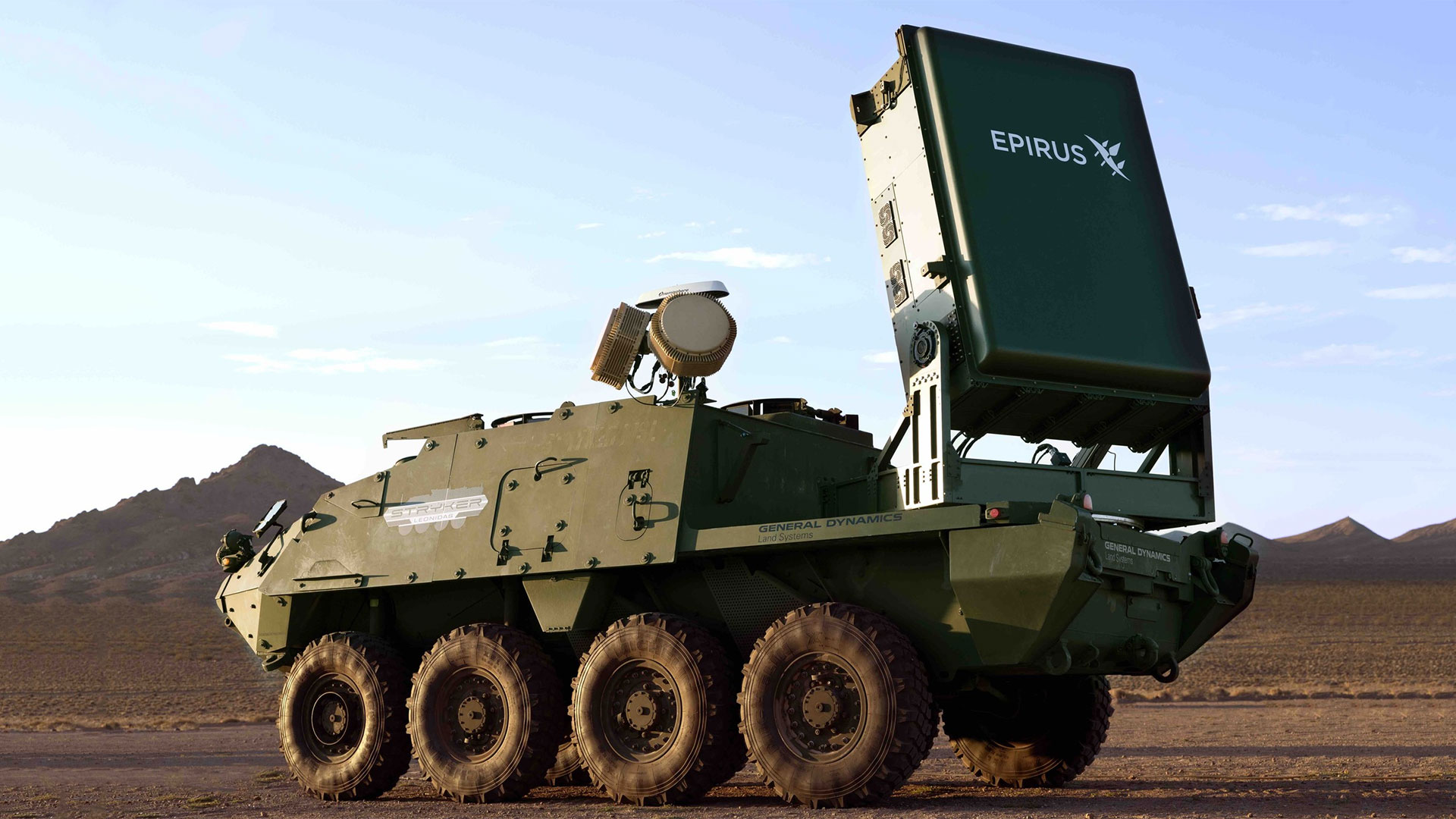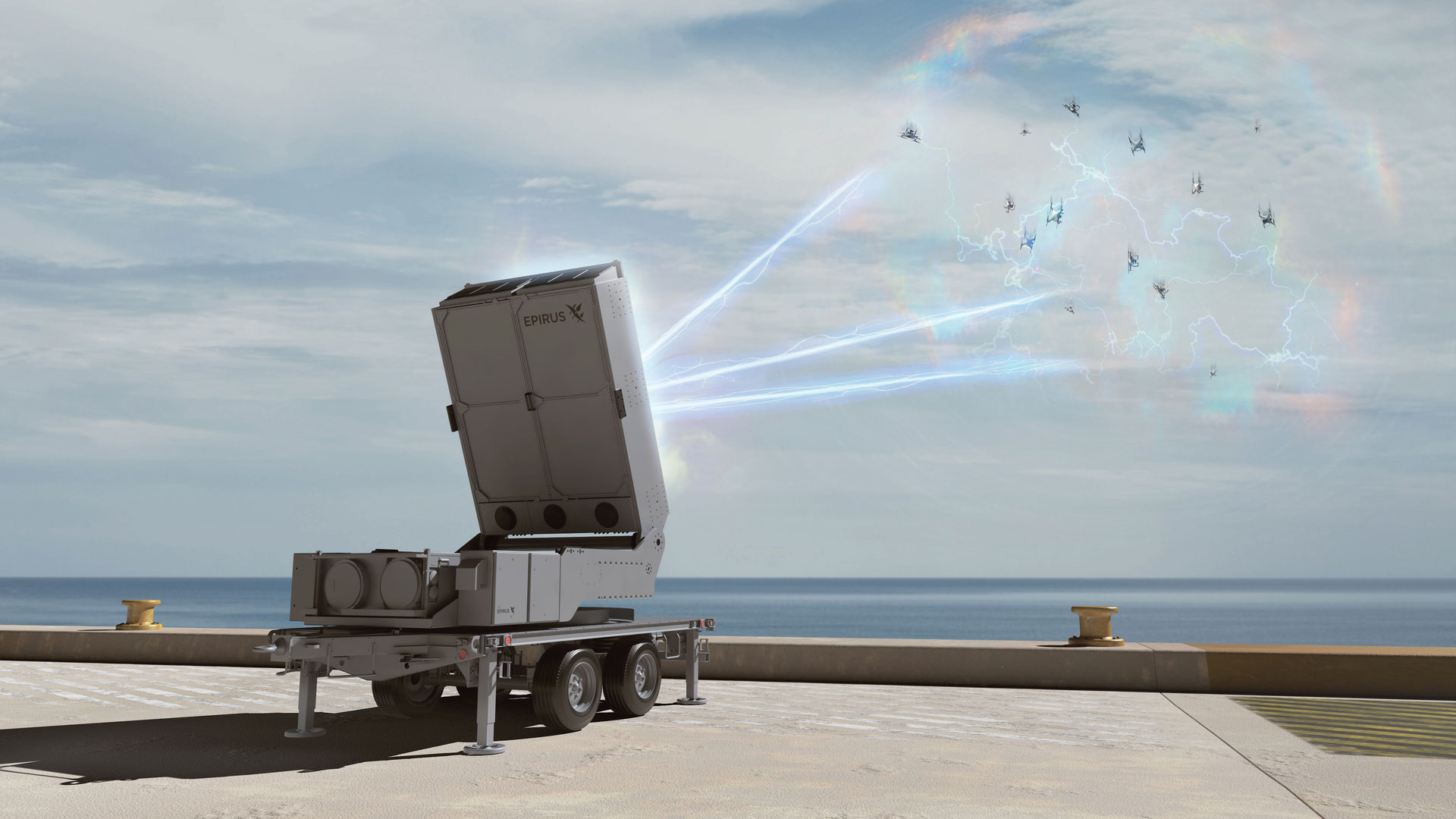High-power microwave system downs 49 drones in one shot – weaponized electromagnetic interference erases drone swarms en masse
The Epirus Leonidas weapon ‘neutralized 61-of-61 drones’ during a recent live fire trial in Indiana.

U.S. electronics warfare specialist Epirus recently demonstrated its flagship Leonidas weapon at a live fire trial in Indiana. The Leonidas system is a high-power microwave (HPM) weapon that “delivers weaponized electromagnetic interference to counter swarms of robotic, asymmetric threats.” During the demo, the latest version of Leonidas successfully disabled all 61 of the 61 drones. Epirus' Leonidas system even managed to down 49 drones in a single ‘shot’ of its HPM beam.
Development of Leonidas began in 2022, and its latest iteration, as demonstrated in the video above, offers “more than double the operational range and lethality” than the first models.
After the successful drone-disrupting showcase earlier this month, Andy Lowery, Epirus CEO, was quick to claim that his firm had reached a “watershed moment.” Furthermore, the demo showed that “Leonidas is the only mission-capable, counter-swarm solution for the one-to-many fight,” asserted Lowery. He underlined his sentiment with the fact that attendees had witnessed “61 drones went up—and 61 went down.”
Ahead of the big headline-grabbing finale, Epirus demonstrated various tactical technologies, such as multi-angle counter-swarm engagement, which tackles two groups of drones coming in from opposite directions.
In an audience participation segment, the Leonidas system was also used to selectively target airborne drones, while leaving non-selected drones unharmed.
Leonidas was even used to take down a drone and ensure it dropped into a “software-defined, pre-identified safe zone.” How tidy.
The Camp Atterbury, Indiana, demonstration was attended by representatives from throughout the U.S. Department of Defense, other U.S. Government agencies, and nine unnamed allied countries.
Get Tom's Hardware's best news and in-depth reviews, straight to your inbox.
Indeed, we are now witnessing the increasing importance of drones in modern warfare on a daily basis. We’ve covered fascinating technologies from both sides of the military equation —offense and defense —quite regularly since Russia invaded Ukraine. With the startling and deadly ascendancy of this flavor of asymmetric warfare in mind, it isn't surprising to see investments being made to reinforce military competitiveness in this new theater.
Follow Tom's Hardware on Google News, or add us as a preferred source, to get our up-to-date news, analysis, and reviews in your feeds. Make sure to click the Follow button!

Mark Tyson is a news editor at Tom's Hardware. He enjoys covering the full breadth of PC tech; from business and semiconductor design to products approaching the edge of reason.
-
usertests What part is being affected first by a microwave beam, and can it be countered with shielding?Reply -
USAFRet Reply
They're not going to publicize that.usertests said:What part is being affected first by a microwave beam, and can it be countered with shielding? -
usertests Reply
Maybe someone else can publicize it for them.USAFRet said:They're not going to publicize that. -
USAFRet Reply
Depends on the range.rluker5 said:Aren't they already using fiber optic wired drones to thwart this? -
Notton Reply
My guess, it works similarly to this:usertests said:What part is being affected first by a microwave beam, and can it be countered with shielding?
https://en.wikipedia.org/wiki/Vigilant_Eagle
If the microwave power output is high enough you can turn any exposed cable or wire into an induction coil. It's basically the same thing as a wireless charging pad, except the charging range is measured in kilometers. Send a high enough voltage through chips not expecting it, and you can easily fry everything.
This is on top of jamming the wireless control signal.
To protect against microwaves/EMF, all you have to do is look at your kitchen. Specifically your microwave's warning label of not using aluminum foil inside. Aluminum foil (or a metal screen) can deflect microwaves.
However doing that will also block radio control of the drone, so it would have to use something like laser signal transmission that NASA uses.
If you thought, "so how do aluminum body airplanes communicate?" they have exposed antennae on the outside and all the sensitive electronics are protected within the fuselage. The antennae and control surface motors can be damaged by lightning strikes, but a full flight computer failure is extremely rare on commercial aircraft.
There is also this paint https://www.emrss.com/collections/emf-shielding-paint which LTT did a video on, but I think aluminum foil would be cheaper for the external skin of an aircraft. -
JRStern Many many questions. Range. Type of drones. How they failed. Power generated on truck or externally? Effect on humans if targeted. Effect on operators (and cell phones!) from sidelobes. Does it kill birds and bugs? Can it shake off radiation-seeking missiles? What about aircraft at the horizon accidentally hit? Is it collimated? Etc.Reply -
nrdwka looks promising. still to see how fast it can also do 360° protection against multi-side attacksReply -
Sangheili112 Reply
sorta remember those drones are limited by wire which means range, you can turn them left or right to avoid being caught by something becuase of the wire. so there only really good for empty areas of land or straight aheadrluker5 said:Aren't they already using fiber optic wired drones to thwart this?


